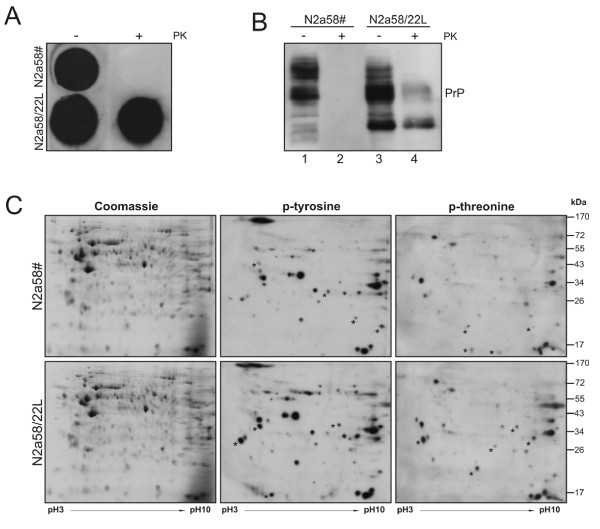Figure 1.
Differentially phosphorylated proteins in PrPSc-positive and -negative N2a cells. (A) PrPres-positive N2a58/22L cells were treated with pentosan polysulfate (PPS) to obtain PrPres-negative N2a58# cells. Successful PPS treatment was validated in a colony assay. Cells were grown to confluence on cover slips and directly lysed on nitrocellulose. Where indicated 20 μg/ml proteinase K (PK) was added followed by the detection of PrP expression using the 6H4 monoclonal antibody. In non-treated cells (-), PrP was detected in both, cured and infected N2a cells. Upon digestion with PK (+), PrPres was only observed in N2a58/22L cells. (B) Equal amounts of protein lysates were incubated with 20 μg/ml PK or left untreated. PrP was detected with the 8H4 monoclonal antibody showing the typical migration pattern of PrP and PrPres in infected and PPS-treated N2a58# cells. In parallel, lysates were incubated with PK to visualize PK-resistant PrPres in N2a58/22L. (C) 150 μg of N2a58# or prion-infected N2a58/22L cell lysates were separated by two-dimensional gel electrophoresis followed either by Coomassie staining or immunoblotting for detection of tyrosine- and threonine-phosphorylated proteins. Black asterisks indicate changed intensities of protein phosphorylation.

